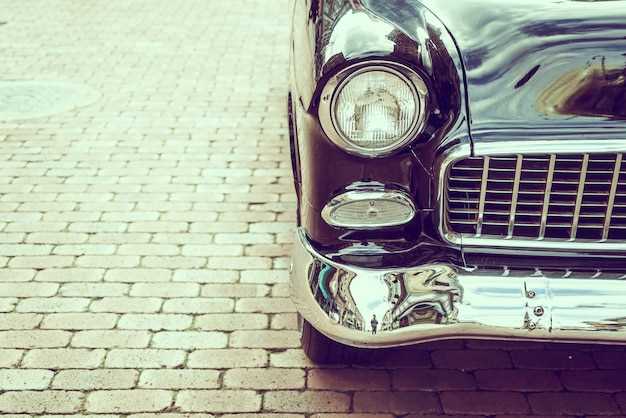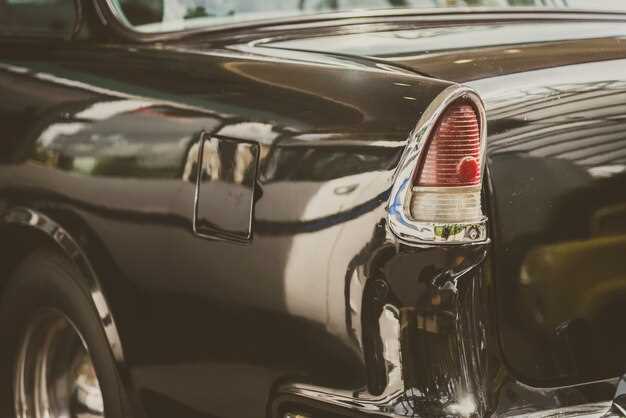
When comparing classic and modern sports cars, enthusiasts often find themselves torn between the allure of old designs and the advancements of new technologies. Each category possesses unique characteristics that cater to different tastes and driving needs. Understanding the performance aspects and innovations of both eras can help in making an informed choice.
Classic sports cars are revered for their timeless aesthetics and the sense of nostalgia they evoke. Their mechanical simplicity often translates to a raw driving experience, with drivers feeling more connected to the road. However, these vehicles may lack the efficiency and safety features of their newer counterparts, which can be a significant drawback for some.
On the other hand, modern sports cars showcase cutting-edge engineering and superior performance. With advancements in materials and technology, these vehicles offer enhanced speed, handling, and fuel efficiency. Yet, the complexity of modern systems can detract from the authentic driving experience that many classic car lovers cherish. Weighing the benefits and drawbacks of both old and new sports cars provides valuable insights into what each type has to offer.
Classic vs Modern Sports Cars: Benefits and Drawbacks

When comparing classic sports cars vs modern sports cars, enthusiasts often highlight several benefits and drawbacks unique to each category.
Classic sports cars, typically defined as vehicles manufactured before the late 1980s, bring a sense of nostalgia and unique aesthetics. Owners appreciate their historical significance, distinctive design, and the driving experience that many argue offers a raw, engaging connection to the road. Maintenance and restoration can be challenging due to the scarcity of parts, yet many enthusiasts relish this aspect, viewing it as a labor of love.
However, classic cars often lack the advances in safety and technology seen in new models. Features such as anti-lock brakes, advanced suspension systems, and modern infotainment are typically absent in older vehicles. Fuel efficiency also tends to be lower, which can be a significant drawback for daily driving scenarios, making classic sports cars better suited for occasional use or as collectible items.
On the other hand, modern sports cars offer a plethora of benefits that stem from technological advancements in automotive engineering. Equipped with powerful engines, cutting-edge safety features, and enhanced driving aids, new models provide greater reliability and performance. Fuel efficiency has also improved, with many manufacturers focusing on eco-friendly innovations without compromising power.
One drawback of modern sports cars is that they may lack the character and charm often found in their classic counterparts. Their design can be more homogenized, as manufacturers tend to follow trends and create vehicles that cater to broader audiences. Moreover, the reliance on technology can lead to higher repair costs and potential electrical issues down the line.
In summary, classic sports cars offer a unique driving experience and historical value, while modern sports cars excel in reliability, safety, and performance. The choice between old vs new depends on individual preferences, driving style, and intended use, making it essential for buyers to weigh these benefits and drawbacks carefully.
Driving Experience: Nostalgia of Classics vs. Technology of Modern Cars
The driving experience offered by classic and modern sports cars is a topic of great debate among enthusiasts. Each category presents unique qualities that cater to different preferences and desires.
Classic sports cars are revered for their nostalgic appeal. They deliver a raw and unfiltered driving experience that many enthusiasts cherish. Key aspects of this nostalgic experience include:
- Driver Engagement: Classic cars often require more involvement from the driver, leading to a deeper connection with the vehicle.
- Sound and Feel: The audible roar of an old engine and the mechanical feedback provide sensations often missed in new cars.
- Historical Significance: Driving an old sports car connects enthusiasts to automotive history, evoking a sense of nostalgia and admiration.
In contrast, modern sports cars prioritize technology and performance, shaping a different driving experience. Their advances provide benefits that classic cars cannot offer:
- Enhanced Performance: New models typically boast superior handling, acceleration, and braking capabilities, enhancing the overall driving thrill.
- Advanced Technology: Features such as electronic stability control, traction systems, and adaptive suspensions contribute to a safer driving experience.
- Comfort and Convenience: Modern cars often include ergonomic designs and luxury features that make them comfortable for daily use.
Ultimately, the choice between classic and modern sports cars boils down to personal preference. Some drivers yearn for the charm and character of old vehicles, while others appreciate the efficiency and technology of new models. Each offers a unique perspective on what it means to drive, showcasing the diverse landscape of automotive culture.
Maintenance and Ownership Costs: Old-school Repairs vs. Advanced Systems

When comparing classic and modern sports cars, maintenance and ownership costs are crucial factors that potential buyers must consider. Classic cars, often referred to as “old-school” vehicles, typically feature simpler mechanics. This simplicity allows for easier repairs and lower labor costs, as many enthusiasts can perform maintenance tasks themselves. Common issues can often be fixed with basic tools and knowledge, making ownership appealing for those who enjoy DIY projects.
On the other hand, modern sports cars are equipped with advanced systems that enhance performance and safety but also complicate maintenance. These vehicles often require specialized diagnostic tools and expertise for repairs, which can increase both time and expense. Additionally, the reliance on cutting-edge technology can lead to higher costs for parts, especially if they need to be sourced from manufacturers. Owners may find themselves facing substantial expenses when advanced electronics or computer systems malfunction.
While classic cars may seem cost-effective due to lower repair expenses, potential buyers must consider factors such as availability of parts and the reliability of older materials. As these vehicles age, sourcing original components may become challenging, leading to higher prices in the aftermarket. Conversely, modern cars, while initially more expensive to maintain, often benefit from warranties and service plans that can mitigate ownership costs in the long run.
Ultimately, the decision between classic and modern sports cars involves weighing the allure of old-fashioned repairs against the benefits of advanced performance systems. Enthusiasts may appreciate the charm and simplicity of vintage models, while others might prefer the efficiency and reliability found in today’s technology-driven vehicles. Each option carries its unique set of benefits and drawbacks regarding maintenance and ownership costs.
Performance Metrics: Speed, Handling, and Safety in Vintage and New Models
When considering performance metrics, the differences between vintage and new sports cars are significant, particularly in terms of speed, handling, and safety features.
Speed is often the first performance metric car enthusiasts look at. Modern vehicles routinely boast higher top speeds and quicker acceleration due to advancements in engine technology and aerodynamics. For instance, new models utilize turbocharging and hybrid systems to achieve greater power without sacrificing fuel efficiency, allowing them to accelerate faster than their old counterparts.
However, vintage sports cars possess a certain charm associated with their limited top speeds. Many classic models emphasize a more engaging driving experience, focusing on the connection between driver and machine rather than sheer numbers. These cars often feature naturally aspirated engines that, while less powerful by today’s standards, provide a unique sound and sensation during acceleration.
In terms of handling, modern sports cars are engineered with sophisticated suspension systems and electronic aids that enhance cornering capabilities and stability. Features like adaptive suspension and electronic stability control enable new models to maintain grip and agility, allowing drivers to tackle sharp turns with confidence. Conversely, old sports cars often rely on simpler suspension setups, which can result in a less forgiving ride. While this can detract from speed and stability, many enthusiasts appreciate the raw feedback and direct handling that classic cars offer.
Safety is another critical area where new sports cars have a clear advantage. Advances in safety technology–such as advanced braking systems, traction control, and multiple airbags–have made modern vehicles significantly safer in the event of an accident. Vintage models, however, often lack these important features, putting drivers at greater risk. While classic cars may come with a nostalgic allure, their safety metrics do not compare favorably to those of contemporary models.
In conclusion, while vintage sports cars deliver a distinct driving experience characterized by engaging performance, they fall short in speed, handling precision, and safety features when compared to new models. This dichotomy presents both pros and cons for enthusiasts deciding between the allure of the past and the capabilities of the present.
